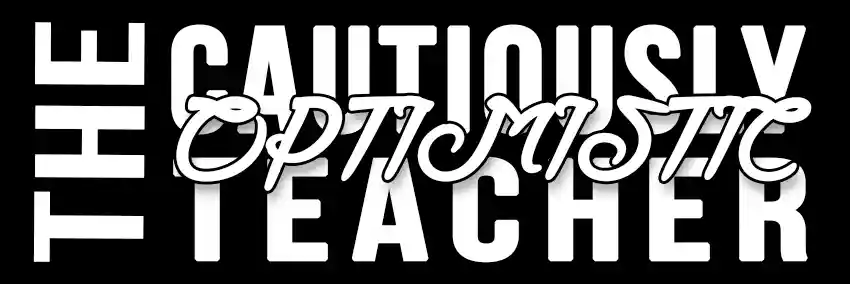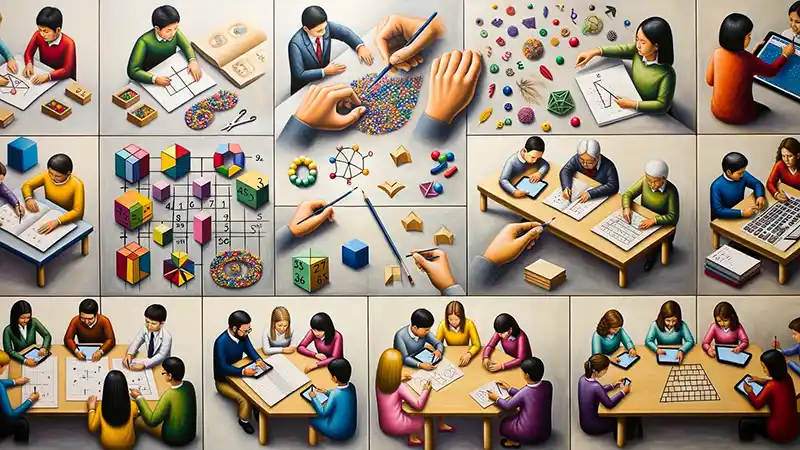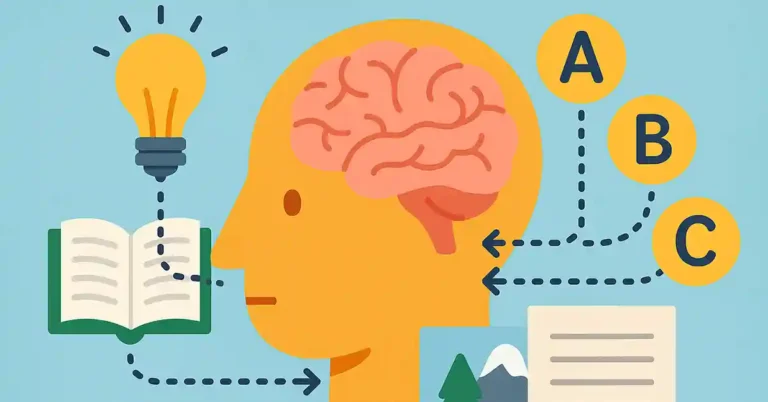Amazing Benefits of Differentiated Instruction in Math Lessons
As an educator who has been deeply immersed in the world of teaching and learning, I’ve seen firsthand the myriad of ways students interact with and process information. There’s a vibrant tapestry of learning styles, cognitive abilities, and personal experiences that each student brings to the table. And while this diversity is truly enriching, it also presents a challenge: how can educators ensure that each student receives the instruction they need to thrive, especially in a subject as multifaceted as mathematics? Enter the game-changer: differentiated instruction.
Mathematics, in part, is about logical thinking, problem-solving, and developing skills that will serve students in every aspect of their lives. The individual learning needs in mathematics are paramount. A one-size-fits-all approach can unintentionally leave some students lost in the intricate maze of numbers, while others might find themselves yearning for more challenges. Differentiated instruction shines a beacon of hope, emphasizing the importance of catering to these unique learning requirements.
Differentiated instruction is a philosophy and a practice. At its core, it is about recognizing and addressing the diverse needs of students. It acknowledges that every learner is on a distinct journey and that educators have the power (and responsibility) to tailor their instruction to align with each student’s strengths, weaknesses, and preferences.
In my years of teaching, I’ve found that employing differentiated strategies in math, in particular, can be transformative. Why? Because math is inherently structured and sequential. Miss a foundational concept, and the entire skyscraper of knowledge could crumble. Differentiated instruction ensures that each brick in this skyscraper is firmly placed, customized to the learner’s pace and style.
The Power of Personalized Learning in Math
Personalized learning is one of the hallmarks of differentiated instruction. In my math classes, instead of following a rigid curriculum, I focus on the learners. Whether it’s through interactive games, hands-on activities, or real-world problem-solving tasks, the goal remains the same: make math resonate with each individual.
There’s a beautiful moment, one I’ve been fortunate to witness many times, when a student’s eyes light up as they “get it”. It’s that eureka moment when the abstract becomes tangible, and what once seemed impossible suddenly makes sense. This magic often happens when the learning is tailored to them, when they are not just a passive recipient but an active participant in their education.
Understanding Differentiated Instruction
Stepping into the realm of differentiated instruction feels like opening a treasure trove of teaching methodologies. At its essence, differentiated instruction isn’t about doing things differently for the sake of being different; it’s about effectively meeting the diverse learning needs of all students. But what exactly is it? And how does it differ from the traditional teaching models we’ve grown accustomed to?
Definition and Main Principles
Differentiated instruction is an educational philosophy and approach that tailors teaching environments and practices to meet the varying learning styles, interests, and abilities of students. The central belief is that when academic strategy is more student-centered, learning becomes more meaningful, engaging, and effective. Here are some of its main principles:
Student Assessment: Continuous assessment of students’ readiness levels, interests, and learning profiles. This is foundational, as understanding where a student is, helps inform where they need to go.
Flexible Grouping: Instead of static groups, students are regrouped often based on various criteria, ensuring that each individual receives targeted instruction that evolves with their progress.
Varied Content Delivery: Teachers present material in multiple formats – visual, auditory, kinesthetic – catering to a broader range of learners.
Task Differentiation: Assignments and projects are often open-ended, allowing students to approach problems in ways that align with their strengths and interests.
Contrasting with Traditional Methods
Traditionally, classroom instruction often followed the “sage on the stage” model, where the teacher dispensed knowledge, and students passively absorbed it. The curriculum was often linear, and teaching methods were largely standardized, making broad assumptions about student readiness and learning styles.
Differentiated instruction, on the other hand, moves away from the “one size fits all” paradigm. Instead of the teacher being the sole focal point, the student comes into sharper focus. Here’s how they contrast:
Pacing: Traditional methods often follow a fixed pace, moving on after a set period, regardless of student mastery. Differentiated instruction is more fluid, adjusting to the pace of the learners, ensuring they grasp concepts before progressing.
Assessment: While traditional methods heavily rely on summative assessments (like end-of-chapter tests), differentiated instruction values formative assessments (like quizzes, reflections, and discussions) that continuously gauge and guide student progress.
Role of the Teacher: In traditional classrooms, teachers primarily instruct. In differentiated settings, they also mentor, facilitate, and collaborate, adapting their roles based on students’ needs.
Learning Environment: Traditional classrooms can be rigid, with set seating and structures. Differentiated classrooms are often dynamic, changing based on the activity, content, or goal of the lesson.
In essence, differentiated instruction shifts the classroom environment from a monologue to a dialogue. It’s an acknowledgment that students come with a spectrum of experiences, skills, and aspirations. As we pivot from the conventional methods of yesteryears, we usher in an era of education that’s more inclusive, responsive, and ultimately, more effective. The beauty of differentiated instruction lies in its promise: every student, no matter their starting point, has a pathway to success.
Why Math Benefits from Differentiated Instruction

If there’s one subject that encapsulates the spectrum of human cognition, it’s mathematics. Math, in its many forms, speaks a universal language, yet its comprehension varies widely among individuals. From algebraic formulas to geometric patterns, the world of numbers and symbols can either be a delightful puzzle or a daunting maze. This variability in perception and understanding makes math a prime candidate for differentiated instruction.
The Unique Challenges and Diversity in Math Comprehension
Mathematics isn’t just a linear journey of addition, subtraction, or multiplication. It delves into abstract concepts, logic, spatial understanding, and critical thinking. This multidimensionality brings about unique challenges:
Foundational Gaps: Unlike subjects like history or literature, where missing one lesson might not severely impact the next, math is cumulative. A lack of understanding in one area can snowball into significant struggles later on.
Math Anxiety: It’s a real phenomenon. Many students develop an inherent fear of math, not necessarily because of the subject itself but due to past experiences, societal perceptions, or pressure. This anxiety can hinder their willingness to engage or try.
Diverse Entry Points: Two students might approach a problem from entirely different angles. One might see an algebraic problem visually, thinking in terms of graphs, while another might break it down analytically step-by-step.
The Role of Individual Learning Styles in Mathematical Understanding
Differentiated instruction recognizes that students not only have diverse abilities but also diverse ways of processing and understanding information. In the context of math:
Visual Learners: These students thrive when they can ‘see’ the math. Graphs, charts, visual aids, or even drawing out problems can be tremendously helpful. For them, a geometry lesson involving shapes and theorems might come alive with hands-on manipulatives or dynamic digital tools.
Auditory Learners: They benefit from hearing explanations, discussing problems, or even teaching the material back to someone else. In a math class, group discussions, verbal walkthroughs of problems, or mnemonic devices can enhance their comprehension.
Kinesthetic Learners: Movement and touch are essential. These students might grasp mathematical concepts better when they can physically interact with materials, use body movements to demonstrate ideas, or even learn through math-related games and activities.
Logical Learners: These individuals excel when they can delve into the reasoning behind concepts. They appreciate the challenge of complex problems, puzzles, and the intricacies of mathematical logic.
Key Benefits
Mathematics is more than just numbers; it’s a skillset that unlocks numerous doors in life, from critical thinking to problem-solving. Differentiated instruction, with its adaptive and flexible approach, serves as the key to these doors for many students. Let’s dive into the essential benefits:
Personalized Learning
Catering to Individual Strengths and Weaknesses:
By tailoring lessons to individual students, differentiated instruction allows educators to build upon each student’s strengths while also addressing their weaknesses. This approach ensures that every student is challenged at an appropriate level, optimizing their learning potential.
Case Studies Showcasing Improvement:
Consider Jamie, a student who always struggled with algebraic equations but shone in geometry. With personalized learning, her teacher focused on geometric approaches to algebra, bridging her strength to her weakness. As a result, not only did her algebra grades improve, but her confidence in tackling unfamiliar math topics soared.
Increased Engagement
Making Math Relatable and Interesting for Each Student:
By connecting math concepts to real-world applications that resonate with individual students’ interests, math becomes less of an abstract subject and more of a tool they can use. A student passionate about basketball might be introduced to statistics through player analytics, for instance.
The Effect on Motivation and Participation:
When students see the relevance and feel a personal connection to what they’re learning, their motivation to participate actively in class discussions and activities naturally increases. Engagement isn’t just about paying attention; it’s about being an active contributor to the learning process.
Enhanced Understanding and Retention
How Customization Aids Deeper Comprehension: Differentiated instruction goes beyond rote memorization. By presenting topics in varied ways that resonate with different learners, it ensures that students don’t just “know” the material, they “understand” it.
The Link Between Understanding and Long-Term Retention:
It’s a simple equation: comprehension leads to retention. When students deeply understand a concept, they’re more likely to remember and apply it in various contexts, both in subsequent lessons and outside the classroom.
Building Confidence and Self-Efficacy
The Psychological Impact on Students: Being consistently left behind or feeling out of depth can erode a student’s self-esteem. Conversely, overcoming challenges, especially in a subject as intimidating as math for some, can significantly boost their confidence.
Importance of Self-Belief in Mathematical Abilities:
A student who believes they can tackle math problems is more likely to persist when faced with challenges. This self-belief, fostered by repeated successes in a supportive, differentiated environment, is crucial for fostering resilience and a growth mindset.
Preparation for Diverse Real-World Scenarios
The Importance of Varied Problem-Solving Skills: The real world doesn’t present problems in neat, textbook formats. By exposing students to a variety of problem-solving approaches, differentiated instruction equips them with a versatile skill set they can apply in unpredictable scenarios.
How Differentiated Instruction Mimics Real-World Challenges:
Real-world problems require adaptability, creativity, and a mix of different skills. A differentiated classroom, with its varied tasks and emphasis on multiple approaches, simulates this environment, preparing students not just for exams, but for life.
Implementing Differentiated Instruction in Math

Differentiated instruction isn’t merely a theoretical concept; it’s a tangible strategy, deeply rooted in practice. Implementing it effectively, especially in the complex realm of mathematics, requires a mix of keen observation, adaptive techniques, and the right tools. Let’s delve into how educators can bring differentiated instruction to life in their math classrooms.
Strategies for Teachers
Assessment-Driven Decisions
Diagnostic Assessments: Before diving into a new topic, gauge your students’ prior knowledge. This can be achieved through pre-tests, discussions, or interactive activities. Knowing where they stand helps in tailoring lessons accordingly.
Formative Assessments: These are continuous checks for understanding throughout a unit. They can be quizzes, discussions, or even reflective journals. They not only help gauge where students are but also guide adjustments needed in teaching strategies.
Summative Assessments: While these evaluate students’ understanding at the end of a unit, they can also be differentiated. For instance, offer students a choice in how they showcase their learning—through a test, a project, or a presentation.
Flexible Grouping
Dynamic Composition: Avoid static groups. Today’s pairs or small groups based on ability can be tomorrow’s interest-based clusters or mixed-readiness groups. This ensures that students learn to collaborate with diverse peers and benefit from varied perspectives.
Peer Teaching: Pair a student who excels in a particular area with one who might be struggling. The act of teaching can reinforce understanding for the former and provide a fresh perspective for the latter.
Varied Content Delivery
Multimodal Presentations: Some students might benefit from visual aids like charts, some from auditory explanations, while others might prefer hands-on activities. Mixing up delivery ensures you cater to all learning styles.
Tech Integration: Use digital platforms and apps that allow for adaptive learning. For instance, software that adjusts math problems’ difficulty based on a student’s progress can be invaluable.
Real-world Connections: Relate math concepts to real-life scenarios that resonate with your students. This not only makes learning more relevant but also caters to those who understand better when they see practical applications.
Tools and Resources to Aid the Process
Digital Platforms: Websites and apps like Khan Academy, Prodigy, and Desmos offer adaptive math challenges, allowing students to progress at their own pace.
Manipulatives: Tools like base-ten blocks, geometric shapes, and algebra tiles can aid in making abstract concepts tangible, especially for kinesthetic learners.
Math Journals: Encourage students to maintain journals where they note down their understandings, questions, and reflections. This not only aids in self-assessment but also provides insights into individual thought processes.
Interactive Whiteboards: Tools like SMART Boards can make math lessons dynamic, allowing for interactive problem-solving sessions, graphs plotting, and multi-modal presentations.
Curriculum Guides: Resources like Carol Ann Tomlinson’s “Differentiated Instruction” series provide a structured approach to implementing differentiated strategies in classrooms.
Conclusion
Mathematics, a subject of universal truths, reveals an equally universal truth about learning: no two minds think exactly alike. In this diversity lies both challenge and opportunity. Differentiated instruction isn’t just a pedagogical strategy—it’s a reflection of the real world, where adaptability, personalized solutions, and varied approaches are the norm.
The advantages of differentiated instruction in math education are clear: heightened engagement, deeper comprehension, and the fostering of a resilient, problem-solving mindset. However, recognizing its benefits is just the first step. To truly unlock its potential, it requires a commitment—a commitment to seeing and nurturing the unique potential in every student.
To all educators reading this: The future of mathematics education beckons a more inclusive, adaptive, and student-centered approach. Differentiated instruction offers a roadmap to that future. Embrace it, integrate it, and witness the transformative power of teaching that meets every student right where they are, guiding them towards where they have the potential to be.
In every equation, variable, or geometric shape, there lies an opportunity to make math resonate with a student’s heart and mind. Seize that opportunity, and redefine what it means to teach and learn mathematics in the 21st century.







